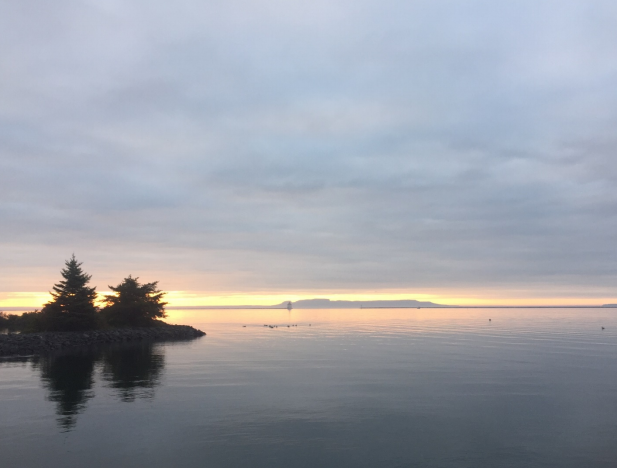GATINEAU - Fifty years ago, Canada and the United States signed the Great Lakes Water Quality Agreement. The agreement allowed both governments to share in the responsibility of ensuring the environmental safety of our shared water resource.
Since 1972, the State of the Great Lakes annual report summarised the health of the Great Lakes through various measurements of health, such as the quality of drinking water, fish consumption, and beach closures.
"Over the past fifty years, the United States and Canada have made tremendous progress working together to protect the Great Lakes and support a thriving regional economy. Through our strong partnership with Canada and additional Great Lakes Restoration Initiative funding from the Bipartisan Infrastructure Law, we remain committed to safeguarding this shared treasure for present and future generations, “said Michael Regan, U.S. Environmental Protection Agency Administrator.
Over 120 Great Lakes scientists and other experts worked to assemble 2022 data and based on their professional knowledge, the health of the Great Lakes is assessed as “Fair" and "Unchanging."
"Protecting the Great Lakes can only be achieved by working together,” said Steven Guilbeault, Minister of Environment and Climate Change. “With our American friends and neighbours, we have had incredible success in cleaning up the Great Lakes from pollutants, while reducing farm run-off and protecting species at risk. This was made possible by concerted action and advocacy, but much yet remains to be done. As we celebrate 50 years of environmental collaboration for our treasured Great Lakes, the released reports and upcoming Public Forum will help us engage communities and stakeholders on our future priorities."
However, according to the SOGL report, “Lake Superior’s forested watershed and coastal wetlands help maintain water quality and a healthy aquatic ecosystem.”
Therefore, the state of the great Lake Superior earns its name as being listed as “Good” and “Unchanging.”
The SOGL report states that “Lake Superior continues to be a good source of high-quality drinking water. Most toxic chemicals monitored in Lake Superior are low compared to other Great Lakes and long-term trends indicate that concentrations are declining. Lake Superior fish continue to be a nutritious food source and contaminant concentrations in fish filets are currently stable. However, fish consumption advisories continue to be in effect for some species. Overall, beaches and nearshore waters in Lake Superior are clear and clean and provide good opportunities for swimming and recreational use, with only occasional closures or advisories.”
Compared to four other Great Lakes, Lake Superior doing fantastic.
Lake Michigan is listed as “Fair and Unchanging” due to its diverse array of plant and animal species but has trouble with invasive species like filter-feeding mussels, which have contributed to lower phosphorus levels and less phytoplankton biomass.
Lake Erie’s algal blooms seriously impact the quality of the water. The report states that “[t]hese blooms can produce toxins, which are harmful to humans and wildlife. Excessive growth of Cladophora continues to be a problem in the eastern basin of the lake which can cause fouling of beaches and shorelines, clog municipal water intakes, and impact tourism and recreational fishing.” Because of the unchanging status of these blooms, the quality of health in Lake Erie is listed as “Poor.”
Lake Ontario, on the other hand, shows improvement as contaminants in fish are declining. However, current phosphorus concentrations on offshore lake productivity continue to be a problem as offshore phosphorus levels are below experts’ objectives to restore phosphorus levels to normal. At this point, Lake Ontario is listed as “Fair.”
Lake Huron is the only lake that measures up to Lake Superior. The SOGL listed Lake Huron as “Good and Unchanging” because toxic chemicals are in decline and the fish population has not been significantly impacted by lower food web organisms such as Diporeia which remains low.
However, Lake Huron losses points because of its nearshore algal blooms and a reduction in offshore nutrients by invasive filter-feeding mussels. Nevertheless, Lake Huron scores as “Good and Unchanging.
